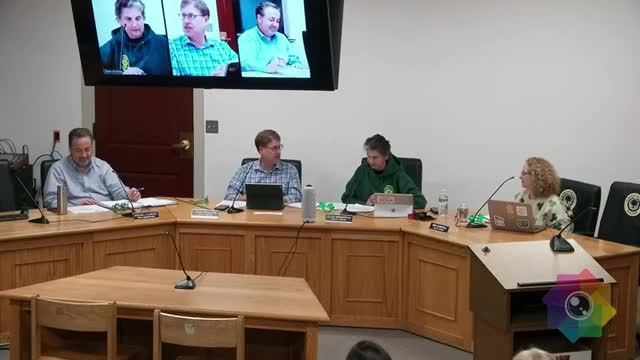Millis finance director, assessor outline why property bills keep rising
March 18, 2025 | Town of Millis, Norfolk County, Massachusetts
This article was created by AI summarizing key points discussed. AI makes mistakes, so for full details and context, please refer to the video of the full meeting. Please report any errors so we can fix them. Report an error »

At a March 17 Select Board meeting, Finance Director Jody Kersey and Principal Assessor Terry Gonzales gave a detailed presentation explaining why Millis homeowners have seen year-to-year increases in property tax bills.
Kersey told the board the town's FY25 average single-family tax bill is $9,925 and that Millis relies heavily on residential property taxes: roughly 76% of the town's revenue comes from the tax levy and about 90�2�3 of the levy is residential. She and Gonzales said recent sharp jumps in the town's assessed valuation are a major driver of tax-bill changes.
The presentation laid out how the levy, property valuations and state rules interact. Kersey described the statutory 2.5% levy growth cap and the role of new growth and debt exclusions in setting what the town may collect. Gonzales explained Millis' billing cycle and assessment process, noting that "in Millis we pay quarterly. The bills are only sent out twice a year" and outlining when preliminary and actual bills are mailed.
The town's equalized valuation rose sharply in the most recent revaluation cycle; Kersey said the town's full valuation increased from about $1.67 billion to roughly $2.23 billion (a roughly 33.48% change reported for the 2024 cycle). The finance director said the current tax rate is $16.40 per $1,000 of assessed value and the town's levy (the amount the town may raise through property taxes after state formulas and offsets) is about $35 million.
Officials emphasized that the tax rate and assessed values are linked: if valuations across the town rise, the tax rate will generally fall to produce the levy the community has authorized, but individual homeowners can still see increases when their property appreciation exceeds the town average. Kersey cautioned that the statewide rules for state aid and the 2.5% levy limit mean Millis has limited ability to grow revenue outside of overrides, new growth and debt exclusions.
During the meeting residents asked for concrete triggers that cause individual tax bills to rise. Kersey and Gonzales described the mechanics: the prior year's levy is increased by 2.5% (unless an override or exclusion applies), new growth is added, and the resulting levy is distributed across all assessed property. Gonzales also summarized how individual property assessments are updated from recent sales data and cyclical inspections.
The town encouraged residents who want a deeper explanation to use the Division of Local Services resources and the town assessing page; Kersey said the town will post frequently asked questions and other educational materials on millisma.gov. Officials said the goal of the session was to demystify the process and give residents clear steps to find more information.
Kersey told the board the town's FY25 average single-family tax bill is $9,925 and that Millis relies heavily on residential property taxes: roughly 76% of the town's revenue comes from the tax levy and about 90�2�3 of the levy is residential. She and Gonzales said recent sharp jumps in the town's assessed valuation are a major driver of tax-bill changes.
The presentation laid out how the levy, property valuations and state rules interact. Kersey described the statutory 2.5% levy growth cap and the role of new growth and debt exclusions in setting what the town may collect. Gonzales explained Millis' billing cycle and assessment process, noting that "in Millis we pay quarterly. The bills are only sent out twice a year" and outlining when preliminary and actual bills are mailed.
The town's equalized valuation rose sharply in the most recent revaluation cycle; Kersey said the town's full valuation increased from about $1.67 billion to roughly $2.23 billion (a roughly 33.48% change reported for the 2024 cycle). The finance director said the current tax rate is $16.40 per $1,000 of assessed value and the town's levy (the amount the town may raise through property taxes after state formulas and offsets) is about $35 million.
Officials emphasized that the tax rate and assessed values are linked: if valuations across the town rise, the tax rate will generally fall to produce the levy the community has authorized, but individual homeowners can still see increases when their property appreciation exceeds the town average. Kersey cautioned that the statewide rules for state aid and the 2.5% levy limit mean Millis has limited ability to grow revenue outside of overrides, new growth and debt exclusions.
During the meeting residents asked for concrete triggers that cause individual tax bills to rise. Kersey and Gonzales described the mechanics: the prior year's levy is increased by 2.5% (unless an override or exclusion applies), new growth is added, and the resulting levy is distributed across all assessed property. Gonzales also summarized how individual property assessments are updated from recent sales data and cyclical inspections.
The town encouraged residents who want a deeper explanation to use the Division of Local Services resources and the town assessing page; Kersey said the town will post frequently asked questions and other educational materials on millisma.gov. Officials said the goal of the session was to demystify the process and give residents clear steps to find more information.
View full meeting
This article is based on a recent meeting—watch the full video and explore the complete transcript for deeper insights into the discussion.
View full meeting
